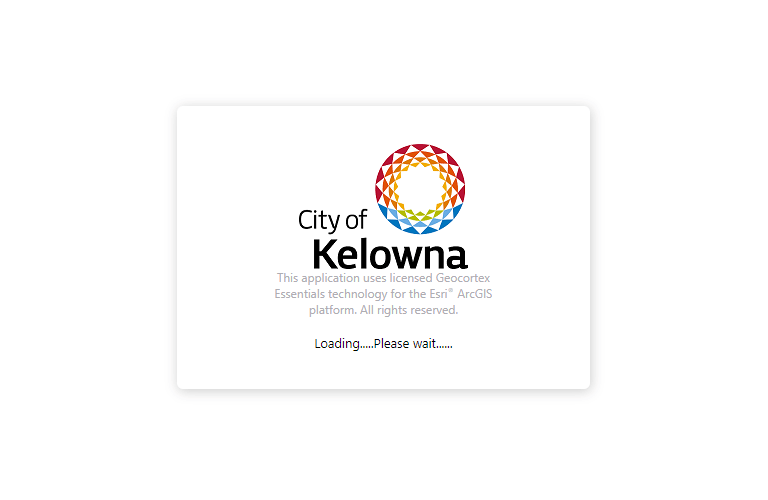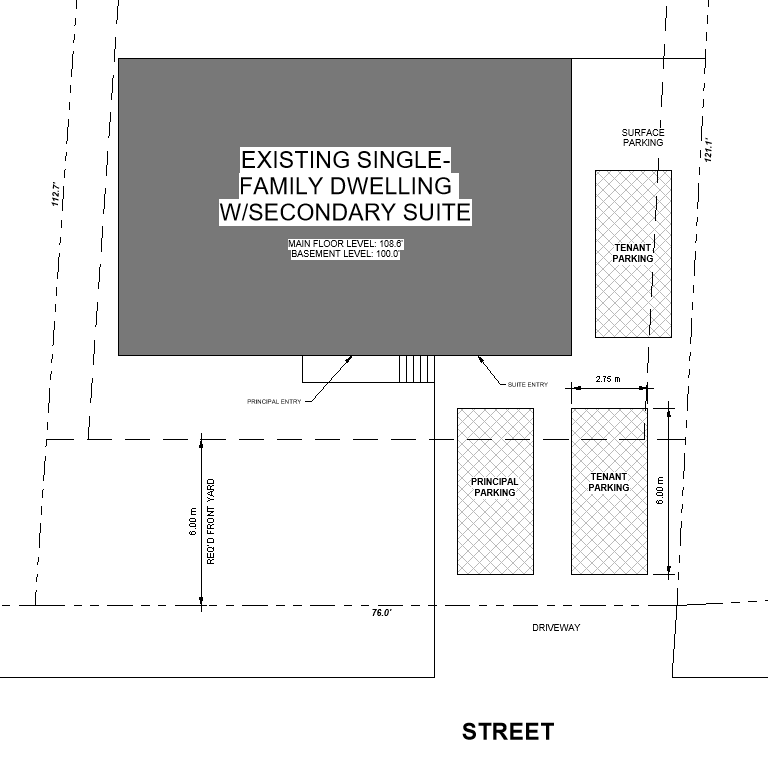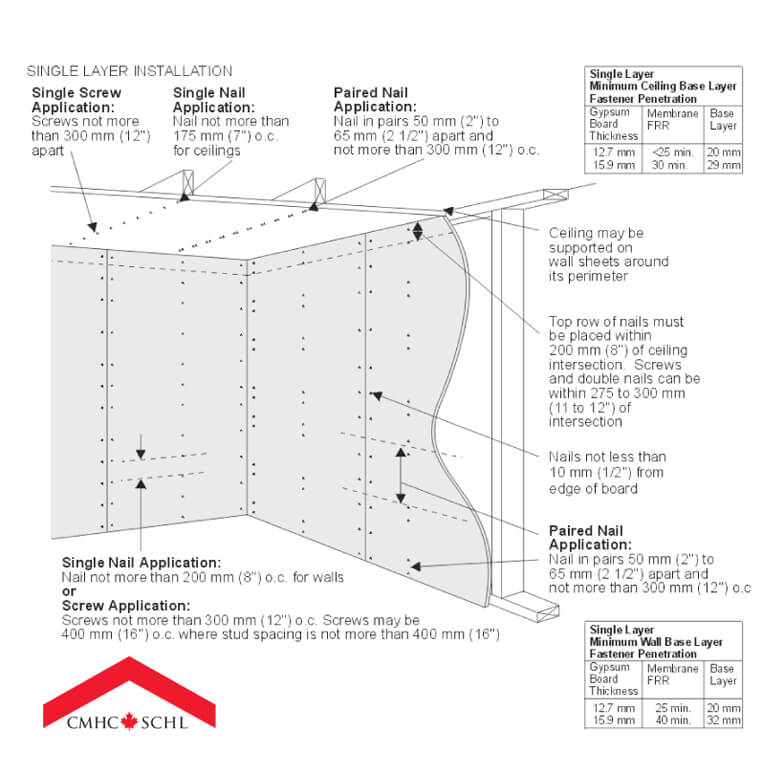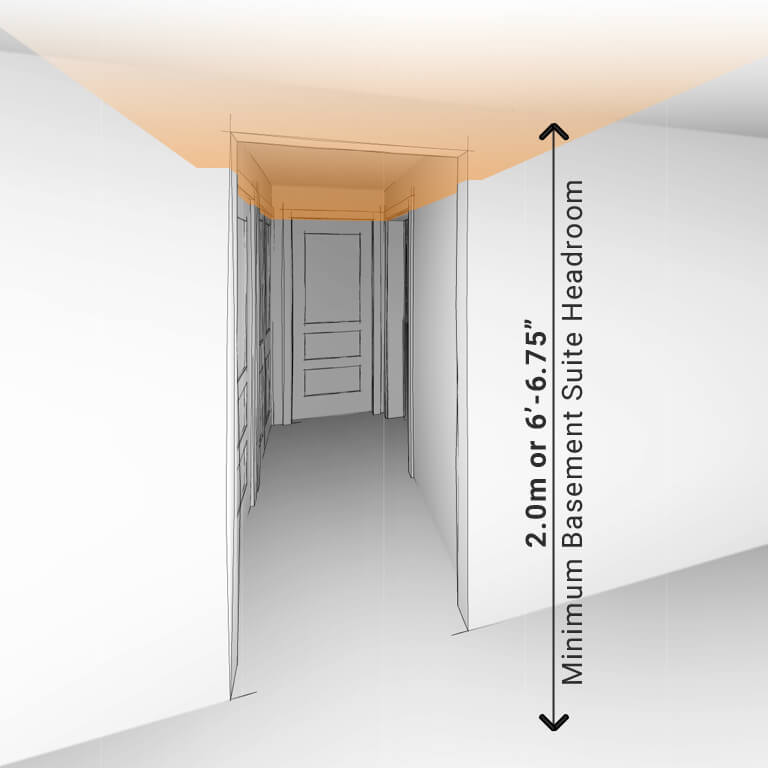Not All Spaces Can be Legalized For a Basement Suite BUT...
Even with significant building code relaxations given to basement suites, there can be a number of complications that can get in the way of legalizing your basement suite. From simple elements such as the ratio of basement suite to owner space, fire separations to the location of entrances, there’s a lot to be considered.
In this article well break down what a legal suite requires and what you can do to determine what that means for your particular set of circumstances.
Changing the zoned use of your property requires seeking permission from your municipal authorities. We do that by going through a development application process which varies depending on the municipality.
Before much effort is made, we need to confirm if a basement suite is allowed under the zoning for your property. Most residential zoning allow for basement suites as a secondary use.
Rarely one of these four issues could be problematic:
Lookup Your Local GIS Mapping System
In order to determine your zoning, the simplest way to find out is to stop and chat with your building department.
They’ll be able to lookup your zoning, check for any potential hurdles and provide you a basement bulletin on their particular basement suite legalization process.
Get Online Data
Alternately, you can go online using Google Chrome or Mozilla Firefox browsers. Launch a search window for “[Your Municipality Name] GIS”. Once loaded, you can search your address. Click on “Property Report” which will list a number of public details including the zoning designation.
Now Lookup Your Zone Specific Uses
With your zoning information in hand, do an online search for “[Your Municipality Name] [zoning designation] zoning bylaw” which will get you a PDF of your zoning bylaw. A skim through that document will describe the “Principal” and “Secondary Uses” for properties within that zoning designation. You’re looking to find “Secondary Suites” listed as a secondary uses for your properties zoning designation.
If you’re still unsure, a phone call to city hall should confirm for you the details described above.
There’s no single bigger limiter to building a legal basement suite then the BCBC (BC Building Code) limitation on suite size. It reads as “a secondary suite shall have a maximum gross floor area of 90 m2 (968.8 ft2) or 40% of the habitable floor area of the principal dwelling, whichever is less.”
In past number of years, municipalities have been enforcing the building code definition of a basement suite more and more. Locally there’s no flexibility on floor space.
Definitions Matter
While at first glance it may seem like non-conformance to the definition is not a major concern, in reality not conforming to the definition of a suite means planning staff and building inspectors can’t treat it as a suite either.
This is why we need to complete the next steps of measuring your current floor space and comparing it against the BC Building Code definition for a secondary suite.
Here's an Example Floor Space Sketch
Collect your tools & using a tape measure at ground level, complete a baseline measurement around the exterior of your entire home. Using the sketch example, draw out the footprint of your home. Be careful to show the interior walls that separate the suite from your space.
These measurements are only approximations at this point so don’t worry about being super accurate. Keep in mind exterior areas such as deck, carports or attached garages or pool houses are excluded from these calculations.
968sf or 40% Of Finished Square Footage
Once measured and drawn out on a basic level, complete the math to get your overall finished square footage. Compare the overall square footage to the space occupied by the space to get the percentage used by the basement suite. If you have a large footprint in your home, then odds are the 40% won’t be a problem for you. However, keep in mind the max overall square footage of a suite can only be 90 m2 or 968 ft2.
On the flip side, if you have a small footprint home and want the entire basement to be a suite, that likely going be a problem. The basement area would be close to 50% of the total finished floor space and thus would not conform to the definition of a basement suite.
How Did Your Floor Space Measure Up?
Did you suite space measure up as less than 968ft2? Did your suite come in at less than 40% of the total finished interior square footage in your home? If so, you’re ready to move onto step 3!
Now that the bigger limitations have been assessed & resolved, it’s time to get a little more technical with municipal zoning requirements. As we work our way into your home, the next step is to consider how your potential tenants will get to and from their suite.
By foot and vehicle are both going to be considered by the city with the focus of attention being on where your tenant will park their vehicle.
One Parking Stall Per Suite Bedroom
Nearly a municipal standard, a two-bedroom basement suite will require a minimum of three parking stalls on the property. One parking stall for the principal dwelling and one more additional parking stall for each bedroom in the suite.
Example Two Bedroom Suite Parking Plan
All municipalities require that landlords provide on site parking for at least one vehicle in addition to at least one space for themselves.
In places like Kelowna and West Kelowna, your required to have one (1) on site parking for every bedroom within your basement suite. That means that a two-bedroom secondary suite will require a minimum of three (3) on site parking spaces in order to receive approval.
In-line parking is often approved but there is little leniency for on street parking unless it’s a unique situation. Enclosed parking spaces such as attached or detached garages also count towards on-site parking. However, if you plan to share an enclosed parking space, they’ll need their own dedicated access.
Bedroom egress (or emergency exiting) is a primary concern of building officials and it all comes down to window size.
Assuming you’ll be attempting to use an existing window for any bedrooms your considering, make sure those windows meet the BC building code requirement. Basement suite windows must have at least 3.77ft2 of opening and a minimum opening width of 15″.
No Window = No Bedroom
One window for each bedroom is required but only within spaces that would be considered bedrooms. That means they have a window as well as a storage closet or wardrobe cabinet.
Additionally, make sure the window you’re wanting to make the egress window is in a location that is easily accessible and should be visually obvious to the average person.
Fire separations in basement suites are very important and treated as such within the BC Building Code. Secondary suites are supposed to have a minimum thickness finished gypsum wall board on the ceilings between units that varies in thickness and type. However, exceptions to the finish & thickness of your drywall ceiling can vary with several ways to get a compliant code assembly.
Grab a Tape Measure
This isn’t always easy to do and we admit it may be difficult to perform without cutting into the ceiling material. The easiest place to check the thickness of your home ceiling finish is around any light or fan hole.
From this location you can measure the thickness of the drywall. Remove the shroud on any recessed pot lights, taking the cover off any junction boxes or pulling down the cover on your bathroom fan.
Building code is modeled after the behavior of a really tall individual who doesn’t function well after dark. As a result, basement suite headroom requirements can seem excessive and heavy handed at times. However, there’s no arguing the importance of people being to able to escape in an emergency situation.
Minimum Heights in Specific Spots
Currently you must have clear egress from areas such as bedrooms to a minimum headroom clearance of 2.0 m or 6′-6.75″.
Any drop beams, bulkheads or doorways that are lower than this minimum height & are along the egress pathway will have to be renovated as part of your basement suite permit process.
To Summarize
Now that you’ve complete the six steps to legalizing your unregistered basement suite, how are things shaping up for your situation?
- If you’re zoned for basement suites, you dodged a potential deal breaker.
- Is your suite less than 968sf and no more than 40% or total square footage?
- Can you get a parking stall for you as well as one for each bedroom in the suite?
- Do your bedroom windows big enough and will work for egress requirements?
- Is your basement ceiling finish the right type and thickness?
- Do you have the minimum head clearance for ceiling height?
If you have answers to the above questions and none of them we’re deal breakers, then you’re ready to move on to next steps of hiring design professional to assist you.














